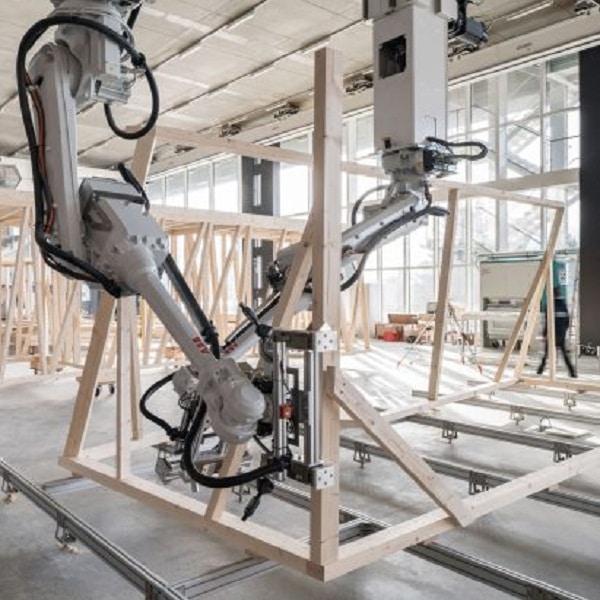Background
Robotics and Automation are widely used in several industries such as automobile, electronics, and aerospace mainly due to the nature of their massive production and design standardization. Unlike other industries, construction industry leaders are reluctant to integrate automation and robotic applications in their construction techniques due to unsuitability of most current conventional design to the available automation and robotics applications; the nature of large scale construction activity; material limitations; managerial concerns; and the lack of comprehensive proven research findings and guidelines related to robotics and automation in construction field.
Many challenges are associated with current robotics and automated techniques such as limitations in developed 3D-printed materials; the inability of most developed 3D-printed materials to sustain standard structural loading; and challenges of 3D-printing with reinforcement which is essential for structural elements to achieve the designed capacity. In ABC-UTC we proposed a step forward toward automating bridge construction “Robotic Bridge Construction” by constructing and experimentally testing bridge elements made through robotics and automation.
This project is the second phase of the ongoing project of “Robotics and Automation in ABC Projects: Exploratory Phase- ABC-UTC-2016-C2-FIU05”. In the exploratory phase, the PIs are identifying suitable materials, ultra-high performance concrete”, suitable robotic systems “mobile robot and 3d-printing system”, and suitable prefabricated bridge elements “UHPC shells for bridge columns and beams”.
Objective:
1- Material level testing for the proposed UHPC design mixture for automation. The material selection is being developed under the exploratory phase of this project.
2- Construction of UHPC shell for beams and columns using automated systems or robot which are both developed under the exploratory phase.
3- Large level testing or the robotic bridge elements (UHPC shells for beams and columns) and comparison with those constructed using conventional construction.
4- Preliminary investigation on robotic and automated construction for repair and retrofit for field application.
Scope:
An overview of the study tasks is given below.
Task 1 – Verification of Exploratory Phase Results
Under this task, verification of the results from the exploratory phase for both material selection and robotic systems will be conducted and iterated to ensure the logistics of constructing UHPC shells for bridge columns and beams.
Task 2- Robotic Construction for Material Testing
In this task, material testing for the proposed design mixture for UHPC will be conducted. The material testing will be conducted for specimens cast regularly such as UHPC cylinders for both compression and modulus of elasticity tests, dog-bone test for tensile strength, and small beams for flexural tests. The material level test will also include specimens cast using robotics and automation such as UHPC cubes for compression tests. This step is important to verify the mechanical properties of the used mixture and the effect of the automation on the mechanical properties in case of using heated print heads.
Task 3– Robotic Construction for Large Scale Specimens
In this task, robotic construction will be used to prefabricate UHPC shells that act as stay-in-place formwork. The prefabricated UHPC shells using robotic construction will include beam and column specimens similar to those tested previously using conventional formwork.
Task 4– Experimental Testing for Large Specimens
In this task, the beam specimen of UHPC shell using robotic construction will be tested under a 3-point load test setup. The column specimen of UHPC shell using robotic construction will be tested under constant axial load and incremental lateral load.
Task 5– Comparative Study between Conventional Construction and Robotic Construction Including Contracting
In this task, the response of both specimens will be compared to similar specimens which were fabricated using conventional construction. In addition, contracting methods will be studied to help constructor on facilitating this proposed automated construction technique.
Task 6– Final Report
Final report will summarize the findings of this proposed research.
Research Team:
Principal Investigator: Dr. Atorod Azizinamini
Co-Principal Investigator: Dr. Islam M. Mantawy
Research Assistant: Ali Javed
Source: abc-utc.fiu.edu










